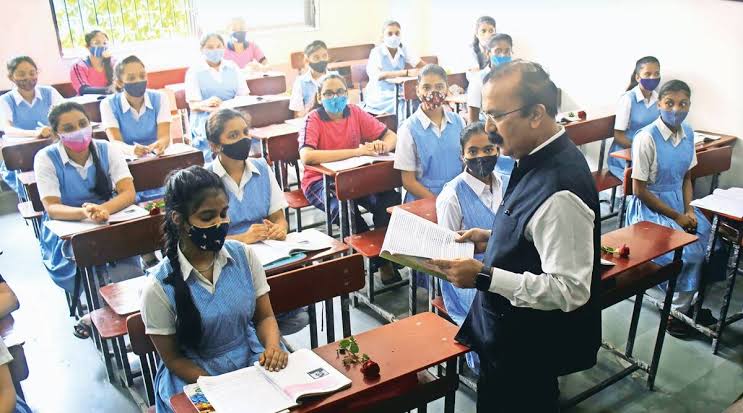Maharashtra Brings Back ‘One State One Uniform’ Policy

Maharashtra Brings Back ‘One State One Uniform’ Policy
The Maharashtra government’s decision to implement a common uniform plan for primary school students across state-run schools from the academic year 2024-25 highlights its commitment to streamlining educational resources and enhancing accessibility for students. By aiming to centrally procure uniforms for approximately 50 lakh students in classes 1 to 8, the government seeks to standardize the provision of essential educational materials and ensure uniformity in the learning environment.
While the initial delay in the implementation of the scheme might have posed challenges, the renewed commitment to roll out the plan emphasizes the significance of equitable access to resources in the educational sector. The central procurement model could potentially lead to cost efficiencies and quality control, thereby benefiting a significant number of students and easing the burden on families who might otherwise struggle to afford uniforms for their children.
By planning to disburse the uniforms to schools across the state, the government demonstrates its intention to ensure uniform distribution and fair access to resources for students, irrespective of their socio-economic backgrounds or geographical locations. Such initiatives not only contribute to fostering a sense of equality and inclusivity in the educational ecosystem but also reflect the government’s proactive measures to enhance the overall educational experience for students within the state.
The decision to provide each student with two uniforms under the ‘one state, one uniform’ initiative in Maharashtra, comprising specific clothing items for both regular and Scout and Guide hours, showcases the government’s efforts to standardize the student experience across state-run schools. The introduction of a uniform color pattern, comprising sky-blue shirts and dark blue shorts or trousers for boys, and a top-skirt or a salwar-kameez of a similar color pattern for girls, aligns with the goal of promoting a sense of unity and equality among students.
The inclusion of features such as shoulder strips and double pockets in the uniform designated for Scout and Guide hours not only emphasizes the practical requirements of these activities but also encourages a sense of discipline and belonging among participating students.
By replacing the practice of providing cash to school management committees for the procurement of uniforms, the government is taking a more centralized approach to ensure uniformity in the quality and design of the uniforms. This shift from local stitching to centralized procurement helps standardize the quality of the uniforms and minimizes discrepancies in the material and design, thereby ensuring a more consistent and equitable experience for all students across the state.

Overall, this initiative not only streamlines the process of uniform distribution but also fosters a sense of identity and belonging among students, emphasizing the values of inclusivity and equality within the educational system.
The criticism from education experts regarding the recent uniform policy shift in Maharashtra underlines the concern that centralizing the procurement and design of school uniforms might compromise the autonomy of schools and students, limiting their freedom of choice and self-expression. The argument that this move could potentially open the door for corruption raises a valid point about the need for transparency and accountability in the implementation of such policies.
Moreover, the contention that the uniformity imposed on students might inadvertently disregard the diverse socio-cultural backgrounds and preferences of the student body highlights the importance of fostering inclusivity and respecting individual agency within the educational environment. Allowing students to have a say in their attire can contribute to their sense of identity and self-determination, supporting their holistic development and well-being.
The previous attempt to adopt the Direct Benefit Transfer (DBT) mechanism in 2016, which aimed to provide financial assistance directly to the students, reflects an alternative approach that acknowledges the importance of empowering students and their families to make choices that align with their specific needs and circumstances. However, the challenges associated with accessing the allocated funds, as highlighted by the withdrawal of the DBT mechanism in 2018, indicate the complexities involved in ensuring the effective implementation of such initiatives.
The critiques emphasize the need for a comprehensive approach that considers the perspectives and rights of all stakeholders, including students, schools, and communities, while also prioritizing transparency, inclusivity, and effective governance in educational policy-making. It underscores the importance of balancing standardization and choice within the education system to create an environment that fosters both unity and individual expression.




